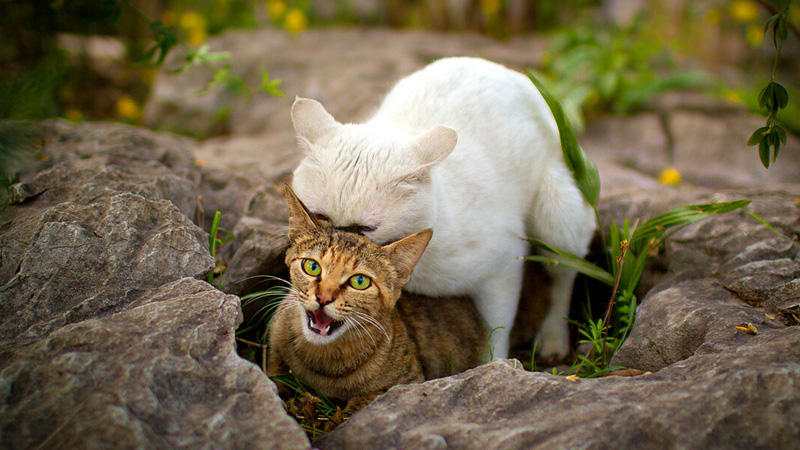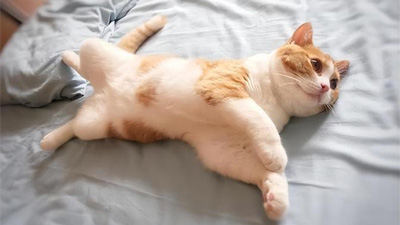What is Humping Behavior in Cats?

Humping behavior in cats, also known as mounting or sexual behavior, is a common occurrence observed in both male and female cats. This behavior involves a cat mounting another animal, human, or even inanimate object and engaging in rhythmic thrusting motions. While many people attribute humping behavior to sexual arousal or mating instincts, it is essential to understand that there are various reasons why cats exhibit this behavior.
Understanding the Nature of Humping Behavior
Humping behavior in cats is predominantly observed in sexually mature animals and is often associated with sexual hormones and reproductive instincts. In intact cats (those that have not been spayed or neutered), humping behavior is primarily driven by the urge to reproduce and establish dominance.
However, it is important to note that humping behavior is not limited to intact cats. Neutered or spayed cats can also exhibit this behavior, albeit less frequently. In such cases, the presence of sexual hormones is not the primary driving force behind the behavior.
5 Common Reasons for Humping Behavior in Cats
1. Sexual Behavior and Hormonal Influences:
In intact cats, humping behavior is often driven by sexual arousal and the urge to mate. Male cats, in particular, may exhibit this behavior more frequently as they try to establish their dominance or territory and compete for potential mates. Hormones such as testosterone play a significant role in stimulating this behavior.
Even after undergoing spaying or neutering procedures, some cats may continue to exhibit humping behavior due to the residual effects of sex hormones. The presence of these hormones, albeit at lower levels, may still affect a cat's behavior and trigger humping.
2. Redirected Sexual Behavior:
Redirected sexual behavior is another reason why neutered cats may engage in humping. Although cats that have been spayed or neutered can no longer reproduce, they may still be stimulated by the scent or presence of a female cat in heat. This can lead to the cat engaging in humping as a form of redirected sexual behavior.
3. Territory Marking and Dominance:
Humping behavior can also be a way for a cat to establish dominance or mark its territory. Cats may mount and hump other animals or objects to assert their authority or show their superiority. This behavior is not necessarily driven by sexual motives but rather a form of communication and social hierarchy establishment.
4. Stress or Anxiety:
Cats may exhibit humping behavior as a response to stress, anxiety, or other environmental triggers. Stressors such as changes in routine, introduction of new pets, or relocation can cause cats to display unusual behaviors, including humping. Humping can serve as a coping mechanism or a way for cats to release pent-up energy or anxiety.
5. Behavioral Issues:
Humping behavior can also be associated with behavioral problems such as compulsive disorders or attention-seeking behavior. Some cats may engage in humping as a way to gain attention from their owners or as a self-soothing mechanism.
Managing and Addressing Humping Behavior
If your cat's humping behavior becomes a concern, there are several steps you can take to manage the behavior effectively:
Consult a Veterinarian: If your cat's humping behavior is sudden or excessive, it is advisable to consult a veterinarian to rule out any underlying medical conditions or health issues that might be triggering the behavior. A comprehensive examination can help identify any hormonal imbalances or discomfort that may contribute to the behavior.
Spaying/Neutering: If your cat has not been spayed or neutered, the procedure may help reduce humping behavior, especially if it is primarily driven by sexual hormones. Spaying or neutering can also have significant health benefits for cats and help control the cat population.
Environmental Enrichment: Providing an enriched environment for your cat can help redirect their energy and reduce stress levels. Offering interactive toys, scratching posts, climbing trees, and regular playtime can help stimulate their senses and provide appropriate outlets for their natural instincts.
Reduce Stressors: Identifying and addressing any potential stressors in your cat's environment can be beneficial. Minimize changes in routine, provide a safe and quiet space for your cat to retreat to, and ensure that they have access to their favorite hiding spots and perches.
Positive Reinforcement and Training: Positive reinforcement techniques can help redirect your cat's humping behavior and reinforce alternative behaviors. Rewarding your cat for appropriate behavior and providing mental stimulation through training sessions can be effective in curbing unwanted behaviors.
Behavioral Consultation: In more severe cases or if the humping behavior persists despite your best efforts, it may be beneficial to seek the guidance of a professional animal behaviorist or a veterinarian specializing in behavior issues. They can provide further insights into the underlying causes and develop a tailored behavior modification plan for your cat.
Conclusion
Humping behavior in cats can be influenced by various factors, including sexual instincts, hormonal influences, stress, and territoriality. While the behavior may be more frequently observed in intact cats, it is not uncommon for neutered or spayed cats to engage in humping.
Understanding the underlying reasons and triggers for humping behavior in your cat is crucial in effectively managing and addressing the behavior. Through environmental enrichment, stress reduction, and positive reinforcement techniques, cat owners can help redirect their cat's energy, promote appropriate behaviors, and create a harmonious living environment for both themselves and their feline companions.
You May Also Like
 Cat HealthIs Neutering Painful For Cats
Cat HealthIs Neutering Painful For Cats Help & AdviceHow Do I Care For My Cat After Neutering
Help & AdviceHow Do I Care For My Cat After Neutering Help & AdviceHow Do I Know if My Cat Needs to be Neutered?
Help & AdviceHow Do I Know if My Cat Needs to be Neutered? Cat HealthWhat Is The Best Age To Spay Or Neuter A Cat?
Cat HealthWhat Is The Best Age To Spay Or Neuter A Cat? Cat BehaviorWhy Do Male Cats Bite Blankets and Hump?
Cat BehaviorWhy Do Male Cats Bite Blankets and Hump? Breed ReviewsThe 6 Disadvantages of Male Cats, Can You Accept Them?
Breed ReviewsThe 6 Disadvantages of Male Cats, Can You Accept Them?